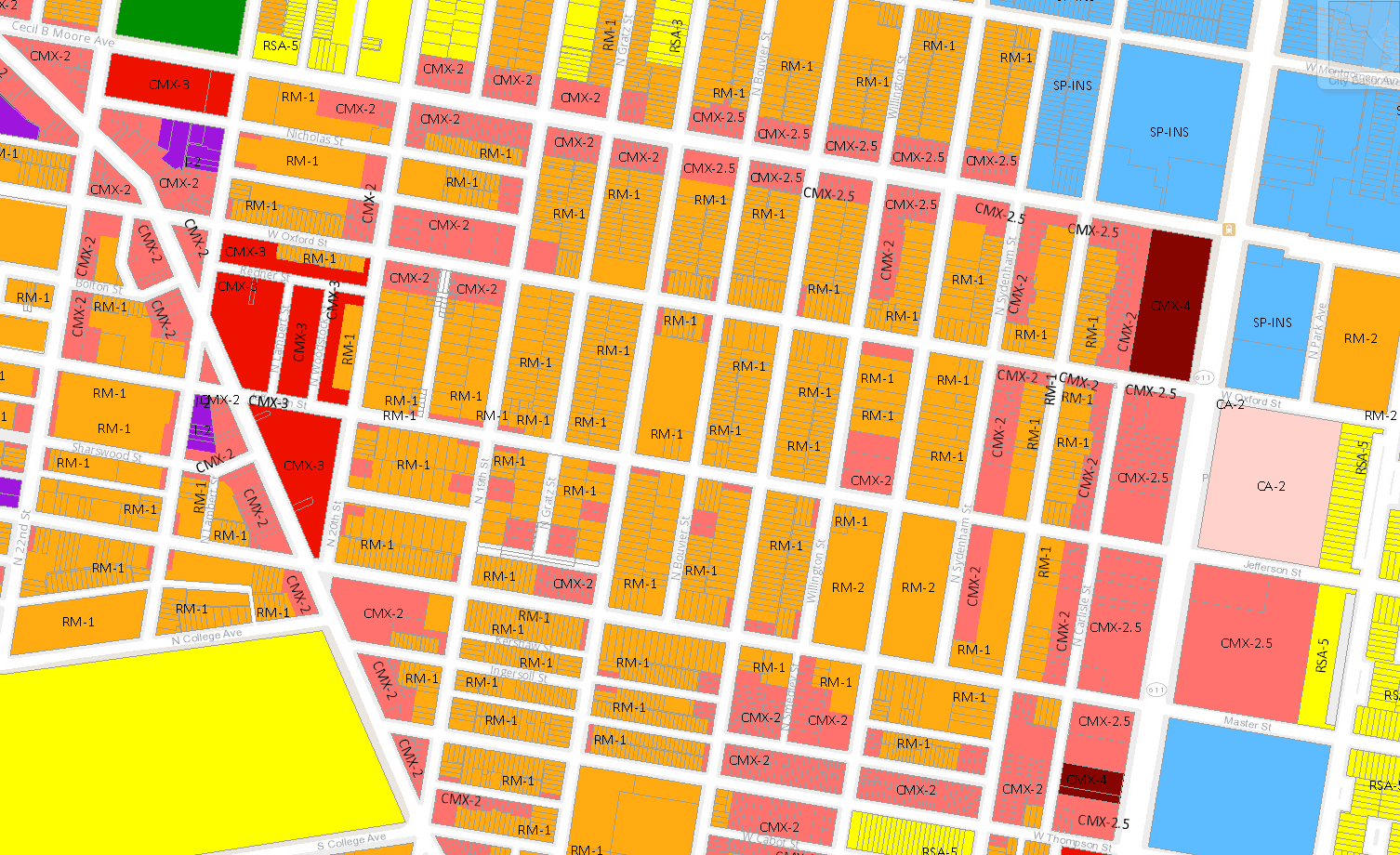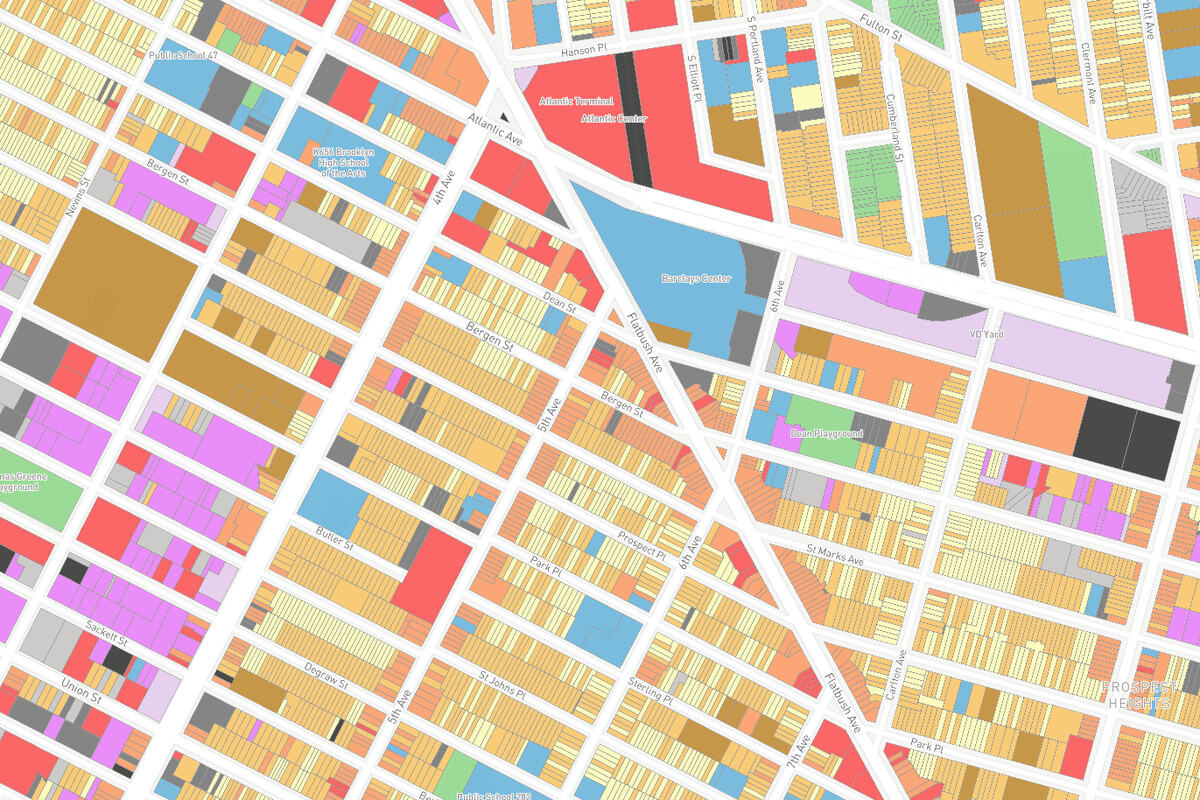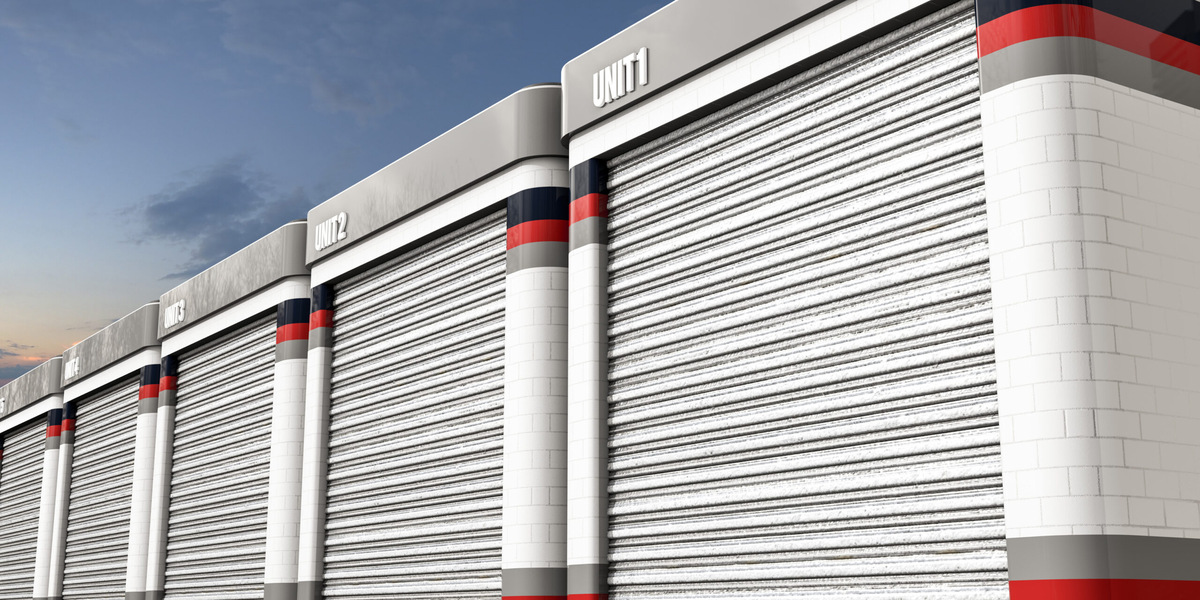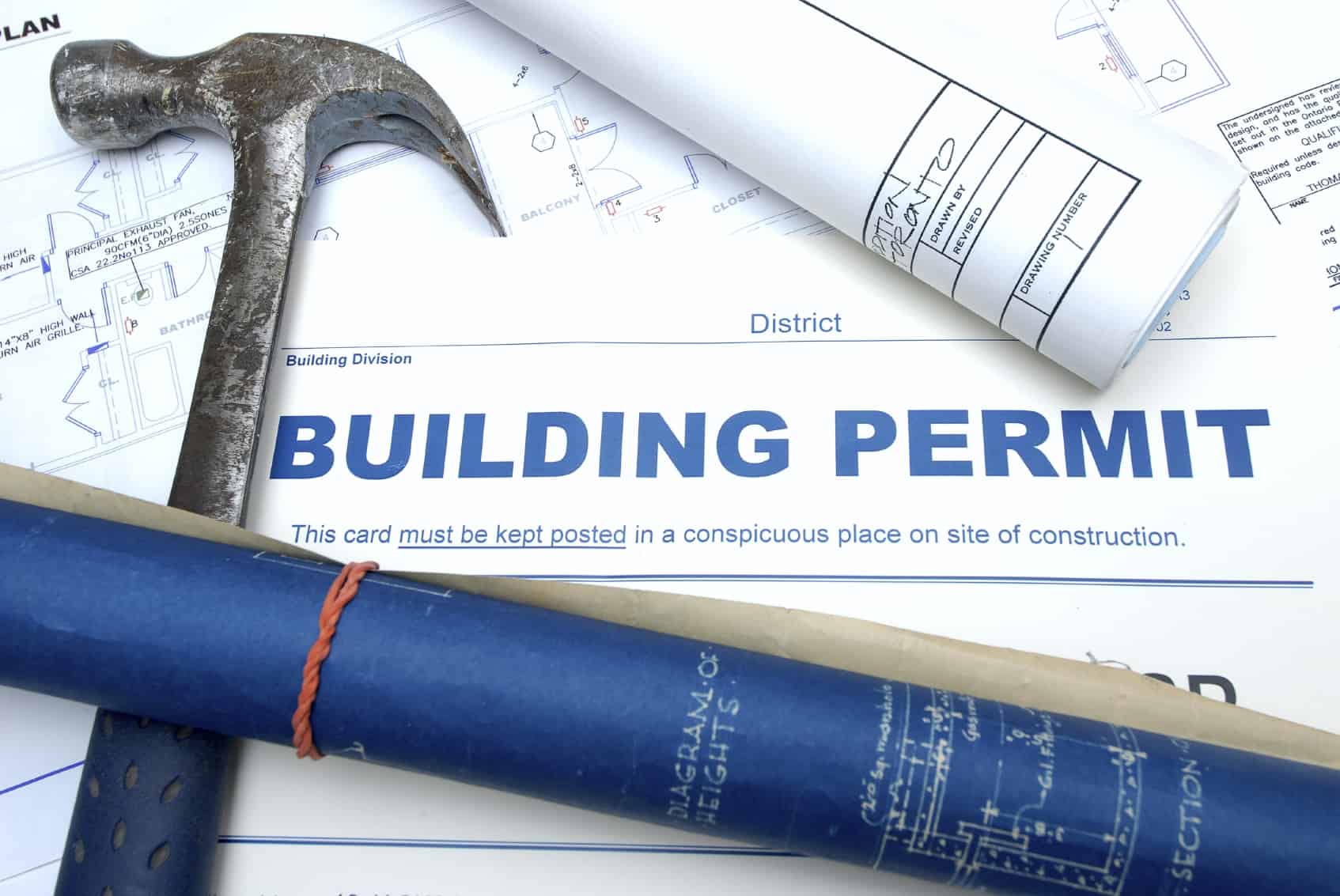Home>diy>Planning & Engineering>How Did The Introduction Of Zoning Change Cities?


Planning & Engineering
How Did The Introduction Of Zoning Change Cities?
Modified: January 9, 2024
Discover how the introduction of zoning revolutionized cities and reshaped urban landscapes with the dynamic intersection of planning-engineering.
(Many of the links in this article redirect to a specific reviewed product. Your purchase of these products through affiliate links helps to generate commission for Storables.com, at no extra cost. Learn more)
Introduction
Throughout the history of urban development, cities have constantly evolved and transformed to meet the needs of their residents. One significant factor that has shaped the layout and organization of cities is the introduction of zoning. Zoning laws have had a profound impact on the way cities are designed, developed, and utilized.
With the rapid growth of industrialization and urbanization in the late 19th and early 20th centuries, cities faced numerous challenges such as overcrowding, pollution, and inadequate infrastructure. To address these issues, governments and city planners began implementing zoning laws. These laws aimed to regulate land use and control the spatial arrangement of different activities within a city.
Zoning can be defined as the practice of dividing land into different zones or districts with specific regulations regarding the types of buildings or activities allowed in each area. These regulations provide guidance on factors such as building height, density, architectural style, and permitted land uses, such as residential, commercial, industrial, or recreational.
One of the primary objectives of zoning is to promote public health, safety, and welfare by ensuring proper land use planning. By segregating land uses into different zones, cities can reduce conflicts between incompatible land uses, minimize environmental hazards, and provide a more organized and predictable urban environment.
The effects of zoning on cities have been far-reaching. It has influenced the physical appearance, functionality, and character of urban spaces. Zoning has also played a crucial role in shaping the social and economic aspects of cities, impacting property values, community development, and quality of life for residents.
In this article, we will explore the concept of zoning in greater detail and delve into its impact on urban development. We will examine how zoning has transformed cities, the effects on land use and property values, as well as the challenges and criticisms associated with this planning tool. Additionally, we will analyze specific case studies to understand how different cities have been shaped by zoning regulations.
By understanding the evolution and effects of zoning, we can gain a deeper insight into the planning and engineering of cities, as well as the social, economic, and environmental implications. It is essential to recognize the role of zoning in urban development and strive for a balance between efficient land use and creating thriving, livable communities.
Key Takeaways:
- Zoning regulations have significantly shaped cities by organizing land use, influencing property values, and promoting vibrant, inclusive neighborhoods. Despite challenges, zoning remains a crucial tool for sustainable urban development.
- From New York City’s iconic skyline to Curitiba’s sustainable model, zoning has transformed cities worldwide. Innovative zoning strategies are essential for creating equitable, resilient, and vibrant urban environments.
Read more: How To Change Time Zone On Alexa
What is Zoning?
Zoning is a planning tool that involves dividing land into different zones or districts with specific regulations and restrictions on land use. These regulations are put in place by local governments to control and guide the development of urban areas. Zoning typically determines what types of activities and structures are allowed in each zone, including residential, commercial, industrial, and recreational uses.
The primary goal of zoning is to ensure orderly and compatible land use within a city or municipality. By allocating specific areas for different types of land use, zoning aims to improve public health, safety, and welfare, as well as promote effective space utilization and community development.
There are several types of zones commonly found in zoning regulations:
- Residential zones: These zones are designated for housing purposes and can include single-family homes, multi-family dwellings, apartment complexes, and other residential developments. Residential zones may also have density restrictions, which determine the maximum number of residential units allowed per acre.
- Commercial zones: These zones are intended for commercial and retail activities such as offices, shopping centers, restaurants, and hotels. Commercial zones may have restrictions on building size, parking requirements, and signage to ensure the orderly development of businesses and promote economic activity.
- Industrial zones: These zones are dedicated to industrial and manufacturing activities, including factories, warehouses, and distribution centers. Industrial zones often have more lenient regulations on noise, pollution, and setbacks due to the nature of the activities taking place.
- Recreational zones: These zones are designated for recreational activities such as parks, playgrounds, sports facilities, and open spaces. The purpose of recreational zones is to provide residents with access to leisure and outdoor activities, enhancing the overall quality of life in a community.
Each zone is typically supported by specific zoning regulations that dictate the allowable land uses, building heights, setbacks, parking requirements, and other design and development standards. These regulations are enforced by the local government or planning departments through zoning permits and building inspections.
It is important to note that zoning regulations can vary significantly between cities and municipalities. While some areas may have strict zoning codes with detailed guidelines, others may have more flexible regulations or even be completely unzoned.
Zoning plays a critical role in urban planning and development, as it provides a framework for controlling growth and preserving the character and integrity of different areas within a city. By creating a balance between various land uses, zoning aims to create vibrant, sustainable, and livable communities for residents and businesses alike.
The Evolution of Cities before Zoning
Before the introduction of zoning, cities developed organically and without strict regulation of land use. The growth and expansion of cities were driven by economic factors, population growth, and the needs of the community. This resulted in a mix of different land uses within close proximity, with residential, commercial, and industrial activities often intertwined.
In the early days of urban development, cities were compact and dense, with a focus on walkability and proximity to necessary amenities. The lack of zoning regulations allowed for flexibility and adaptability as cities grew and changed over time.
However, as cities continued to expand, a range of issues started to emerge. The rapid growth of industrialization in the late 19th century led to the concentration of factories and warehouses in specific areas. This resulted in increased pollution, noise, and congestion in these industrial districts, impacting the quality of life for nearby residents.
Additionally, concerns about public health and safety also arose. The close proximity of residential areas to industrial activities posed health risks due to pollution and the potential for accidents. As cities became more crowded and congested, the need for urban planning measures to address these issues became apparent.
The first zoning regulations emerged in the early 20th century as a response to these urban challenges. Cities began to enact laws that restricted the types of businesses that could operate in certain areas, separated industrial zones from residential areas, and imposed building setbacks and height restrictions.
One of the earliest examples of zoning in the United States was the New York City Zoning Resolution of 1916. This groundbreaking legislation divided the city into different zones based on building use and height restrictions, aiming to alleviate the issues caused by the haphazard development of tall buildings without regard to their impacts on the surrounding environment and neighboring properties.
The zoning movement gained momentum during the 1920s and 1930s, with many cities adopting similar zoning regulations. These early zoning laws set the stage for the more comprehensive and sophisticated zoning codes that exist today.
It is crucial to note that zoning regulations were not universally embraced in their early stages. There was significant debate and opposition to these regulations from property owners, who believed that zoning infringed upon their property rights and limited their ability to use their land as desired.
Nevertheless, as cities faced mounting challenges such as increased population density, traffic congestion, and the need for public infrastructure, zoning gained wider acceptance. It was seen as a tool for managing and organizing growth in a more rational and coordinated manner.
Over time, zoning regulations evolved and became more refined, taking into account factors such as environmental protections, historic preservation, and mixed-use development. Today, zoning remains a vital planning tool, helping cities balance competing interests and shape their physical and social landscapes.
The Purpose and Objectives of Zoning
Zoning plays a crucial role in urban planning by establishing a framework for the orderly development and organization of cities. The primary purpose of zoning is to promote public health, safety, and welfare, while also accommodating the diverse needs of a community. Zoning achieves these goals through the following objectives:
- Land Use Regulation: One of the key objectives of zoning is to regulate land use within a city or municipality. By dividing land into different zones or districts, zoning ensures that particular areas are designated for specific activities, such as residential, commercial, industrial, or recreational uses. This helps prevent incompatible land uses from coexisting, minimizing conflicts and potential negative impacts on the surrounding environment and neighboring properties.
- Protection of Public Health and Safety: Zoning regulations are designed to safeguard the health and safety of residents. For example, zoning laws may establish setbacks and buffer zones to mitigate noise and pollution from industrial activities, ensuring that residential areas are adequately protected. Zoning can also mandate minimum lot sizes, building setbacks, and fire safety standards to enhance public safety and emergency response capabilities.
- Preservation of Community Character: Zoning plays a vital role in preserving the unique character and identity of different neighborhoods and communities. Zoning regulations can include provisions for maintaining architectural styles, preserving historic buildings, and protecting natural features such as parks and open spaces. This helps maintain the aesthetic appeal and cultural heritage of a city, fostering a sense of place and community pride.
- Support for Infrastructure Planning: Zoning also facilitates the efficient provision of public infrastructure and services. By designating areas for specific land uses, cities can plan and allocate resources for utilities, transportation networks, schools, healthcare facilities, and other essential services accordingly. This helps ensure that infrastructure is appropriately scaled and located to meet the needs of the population in different zones.
- Promotion of Economic Development: Zoning regulations can play a role in supporting economic vitality and growth. By designating areas for commercial and industrial activities, zoning can encourage investment, job creation, and entrepreneurship. Zoning can also establish guidelines to foster mixed-use development, creating vibrant neighborhoods that combine residential, commercial, and recreational spaces, promoting walkability and reducing dependency on automobiles.
Overall, zoning serves as a tool for urban planners and policymakers to manage growth, balance competing interests, and shape the physical and social fabric of cities. It aims to create livable, sustainable, and inclusive communities that enhance the overall quality of life for residents.
The Effects of Zoning on Urban Development
Zoning has had a profound impact on the development and evolution of cities worldwide. By regulating land use and imposing specific guidelines and restrictions, zoning has influenced numerous aspects of urban development. The effects of zoning on cities can be seen in the following areas:
- Physical Landscape: Zoning has played a significant role in shaping the physical landscape of cities. It has influenced the distribution and arrangement of different land uses, such as residential, commercial, and industrial areas. Zoning regulations dictate building heights, setbacks, and architectural styles, contributing to the overall character and appearance of neighborhoods and districts.
- Land Use Patterns: Zoning has been instrumental in determining land use patterns within cities. By segregating land uses into different zones, zoning has contributed to the separation of residential areas from commercial and industrial zones. This has led to the development of distinct districts, each serving specific purposes and accommodating the needs of different types of activities.
- Density and Building Form: Zoning regulations often stipulate density requirements, influencing the form and density of buildings in different areas. Zoning can promote concentrated, high-density development in certain districts, while ensuring low-density development in other zones, balancing the needs for population density, open spaces, and infrastructure capacities.
- Transportation and Infrastructure: Zoning plays a role in shaping transportation systems and infrastructure planning. By separating land uses and providing guidelines for mixed-use developments, zoning can influence travel patterns, reducing dependence on private vehicles and promoting alternative modes of transportation. Zoning also helps determine the need for and location of public infrastructure, such as roads, sidewalks, utilities, and public transportation hubs.
- Economic Development: Zoning regulations can impact economic development within cities. By designating areas for different types of land uses, zoning can influence the location of businesses, industrial zones, and commercial centers. Zoning can promote economic growth and job creation by providing appropriate spaces for businesses and facilitating mixed-use developments that encourage pedestrian activity and create vibrant, active neighborhoods.
- Social Dynamics: Zoning can affect the social fabric of cities. The segregation of land uses and the creation of distinct zoning districts can shape the social and demographic composition of neighborhoods. Zoning can contribute to the creation of diverse communities by providing opportunities for mixed-income housing, fostering social interaction and cohesion.
While zoning has brought about significant changes in urban development, it is essential to recognize that the effects of zoning are influenced by numerous factors, including cultural, economic, and historical contexts. Therefore, zoning should be implemented and revised according to the specific needs and dynamics of each city, ensuring that it achieves a balance between efficient land use and the creation of vibrant, livable communities.
Read more: How To Change Time Zone On Google Home
Impact on Land Use and Property Values
Zoning regulations have a considerable influence on land use patterns and property values within cities. By designating specific areas for different land uses, zoning shapes the spatial arrangement of residential, commercial, and industrial activities. This, in turn, has a direct impact on property values and the overall dynamics of the real estate market.
Effect on Land Use:
Zoning controls the permissible land uses in different areas of a city. Residential zones typically allow for the construction of single-family homes, townhouses, apartments, or other housing options. Commercial zones are allocated for businesses such as offices, retail stores, restaurants, and hotels. Industrial zones are designated for manufacturing, warehousing, and industrial activities.
By separating these land uses, zoning helps maintain the functionality, organization, and compatibility of neighborhoods and districts. It prevents incompatible land uses from coexisting, reducing potential conflicts and maintaining the quality of life for residents.
Impact on Property Values:
Property values are influenced by the zoning regulations that dictate how land can be used. Zoning can affect property values in various ways:
- Demand and Scarcity: Zoning regulations can create scarcity and influence demand for certain types of properties. For example, residential zones with limited available land may lead to higher demand and increased property values. Similarly, commercial or mixed-use zones with limited space may be in high demand, resulting in increased property values.
- Neighborhood Characteristics: Zoning can shape the character and quality of neighborhoods, which can impact property values. Residential areas with well-maintained homes, good schools, parks, and other amenities may command higher property values due to their desirability. Commercial zones that offer convenience, accessibility, and a vibrant business scene may also contribute to higher property values in the surrounding area.
- Permitted Uses: Zoning regulations can either enhance or restrict potential development options for a property. Residential properties located in neighborhoods with restrictions on building types or heights may maintain a certain character and have stable property values over time. On the other hand, properties located in zones that allow for mixed-use development may experience potential appreciation as they offer a range of possibilities in terms of residential and commercial uses.
- Location: Zoning can affect property values based on the location of a property within different zones. Properties located near commercial or mixed-use zones may benefit from proximity to amenities and services, potentially leading to higher property values. Likewise, properties located in industrial zones may experience lower property values due to noise, pollution, or limited aesthetic appeal.
It’s important to note that the impact on property values can vary based on local market conditions, urban context, and other factors. Zoning alone does not determine property values, but it is a fundamental factor that shapes the potential and perception of a property’s value within its respective zone.
In summary, zoning regulations play a crucial role in determining the uses of land within a city, which directly affects property values. Property values are influenced by factors such as location, scarcity, neighborhood characteristics, and permitted uses. Understanding the zoning regulations in an area is essential for property owners, investors, and prospective buyers as they assess the potential and market value of properties within a particular zone.
Zoning laws were introduced to regulate land use and development, leading to segregated areas for residential, commercial, and industrial purposes. This changed cities by shaping their physical layout and influencing the social and economic dynamics within them.
Social and Economic Consequences of Zoning
Zoning regulations have profound social and economic consequences on the development and functioning of cities. These consequences can be seen in various aspects, including community development, socio-economic equity, and the overall well-being of residents.
Social Consequences:
- Community Development: Zoning plays a significant role in shaping community development by influencing the layout and design of neighborhoods and districts. Zoning regulations can promote mixed-use development, creating vibrant and walkable neighborhoods where residents can live, work, and play in close proximity. This enhances social interaction, fosters a sense of community, and supports the creation of inclusive and livable spaces.
- Preservation of Cultural and Historic Significance: Zoning regulations can preserve the cultural and historic significance of certain areas within a city. By designating historic preservation districts or imposing design guidelines, zoning helps protect and maintain historic structures, landmarks, and neighborhoods. This fosters a sense of identity and connection to the past, contributing to a richer cultural fabric within the community.
- Creation of Livable Environments: Zoning can enhance the quality of life for residents by regulating aspects such as noise, pollution, and access to amenities. Zoning regulations can establish buffer zones between commercial and residential areas, ensuring that residents are not adversely affected by noise or other disturbances. Additionally, zoning regulations can require the provision of open spaces and recreational facilities, providing opportunities for relaxation and recreation in close proximity to residential areas.
Economic Consequences:
- Economic Development and Job Creation: Zoning can have a significant impact on economic development and job creation. By designating areas for various land uses, zoning can attract businesses and industries, leading to increased employment opportunities. Commercial zones that allow for mixed-use development can stimulate economic activity by creating vibrant shopping districts and centers, increasing foot traffic, and supporting local businesses.
- Property Values and Housing Affordability: Zoning regulations can influence property values, impacting housing affordability within a city. Zoning that restricts development or requires larger lot sizes in certain areas can contribute to higher property values and potentially make housing less affordable for lower-income populations. On the other hand, zoning that encourages the construction of affordable housing or permits denser development can promote housing affordability.
- Socio-Economic Equity: Zoning can play a role in addressing socio-economic inequities within a city. Zoning regulations that encourage mixed-income housing or affordable housing initiatives can help create more economically diverse neighborhoods. By promoting housing diversity, zoning can decrease social segregation and foster communities that offer opportunities for people from different income groups to live in the same area.
It is important to note that while zoning can have positive social and economic consequences, it is not without challenges and potential drawbacks. Poorly designed or outdated zoning regulations can hinder economic development, limit housing options, and perpetuate social inequalities. It is essential for cities to continually assess and update their zoning codes to ensure that they align with the evolving needs and values of their communities.
By carefully considering the social and economic consequences of zoning, cities can create a more equitable, inclusive, and sustainable urban environment for their residents.
Challenges and Criticisms of Zoning
While zoning regulations have been instrumental in shaping urban development, they are not without challenges and criticisms. The practice of zoning has faced various obstacles and generated debates among planners, policymakers, and communities. Some of the key challenges and criticisms of zoning include:
- Rigid and Inflexible: Zoning regulations can be seen as rigid and inflexible, limiting adaptive land use in response to changing needs and market demands. Some argue that strict zoning can stifle innovation, hinder creative land use solutions, and impede the development of mixed-use and sustainable neighborhoods.
- Lack of Housing Affordability: Zoning has been criticized for contributing to housing affordability challenges. Zoning practices that restrict density, limit multi-family housing options, or impose minimum lot sizes can lead to higher housing costs, making it difficult for lower-income individuals and families to find affordable housing. The lack of flexibility in zoning can hinder the creation of diverse housing options.
- Segregation and Inequality: Zoning has been accused of perpetuating social and economic segregation within cities. The separation of land uses and zoning that favors single-family homes in certain areas can result in exclusionary practices and limit access to resources and opportunities for marginalized communities. Zoning codes that fail to promote mixed-income or affordable housing options can contribute to further inequality.
- Displacement and Gentrification: Zoning regulations can unintentionally contribute to displacement and gentrification. Zoning changes that encourage higher-density development or attract new businesses may lead to rising property values and the displacement of lower-income residents who can no longer afford to live in the area. Additionally, zoning changes that prioritize commercial or luxury development can contribute to the loss of affordable housing and the transformation of neighborhoods.
- Community Input and Representation: Critics argue that zoning decisions often lack sufficient community input and representation. The process of creating and amending zoning codes may not always involve meaningful public participation, leading to outcomes that do not reflect the diverse needs and interests of the community. This can result in zoning regulations that do not align with the aspirations and desires of the residents.
- Unintended Consequences: Zoning regulations can have unintended consequences on urban development. For example, strict separation of land uses can contribute to increased traffic congestion and longer commutes as residents must travel longer distances to access different services and amenities. Moreover, zoning regulations that emphasize automobile-oriented development can hinder the creation of walkable and sustainable neighborhoods.
Addressing these challenges and criticisms requires a thoughtful and balanced approach to zoning. Many cities have begun to explore innovative zoning strategies, such as form-based codes, mixed-use zoning, inclusionary zoning, and transit-oriented development, to address the limitations of traditional zoning regulations and promote more equitable and sustainable urban environments.
By actively considering these challenges and criticisms, cities can foster better-designed and more inclusive zoning practices that prioritize the well-being of their residents and promote a more vibrant and equitable urban fabric.
Zoning as a Tool for Urban Planning and Design
Zoning plays a vital role as a tool for urban planning and design, providing a framework for shaping the physical and functional aspects of cities. It offers a systematic approach to organizing land use and development, guiding the growth of urban areas, and promoting sustainable, livable communities. Here are key aspects of zoning as a tool for urban planning and design:
- Orderly Land Use: Zoning helps establish a sense of order and predictability in the development of cities. By delineating different zones for specific uses, such as residential, commercial, industrial, and recreational activities, zoning ensures that land is utilized efficiently and in accordance with an overall plan. This promotes organized growth and supports the long-term sustainability of cities.
- Promoting Efficient Infrastructure: Zoning helps plan and accommodate necessary infrastructure and public services. By guiding the location and density of development, zoning allows for efficient provision of transportation networks, utilities, public facilities, and amenities. This strategic alignment of land uses and infrastructure ensures that resources are efficiently utilized and that public services are accessible to residents and businesses.
- Creating Vibrant Neighborhoods: Zoning can foster the creation of vibrant, mixed-use neighborhoods that combine residential, commercial, and recreational spaces. By integrating different land uses, zoning promotes walkability, reduces reliance on automobiles, and encourages vibrant public spaces. Mixed-use zoning supports economic activity, social interaction, and a sense of community by providing opportunities for people to live, work, and explore their neighborhood within close proximity.
- Ensuring Environmental Sustainability: Zoning can incorporate sustainable design and environmental considerations into urban planning. Zoning regulations can encourage green and sustainable building practices, as well as the protection of natural features and open spaces. With proper zoning, cities can promote energy-efficient buildings, green infrastructure, and the preservation of ecosystems, mitigating the environmental impacts of urban development.
- Promoting Equity and Inclusivity: Zoning can be used to advance social equity and inclusivity. Through zoning policies such as inclusionary zoning and mixed-income housing requirements, cities can promote diverse and affordable housing options, ensuring that a range of income groups can access suitable housing within different neighborhoods. Zoning can also encourage the provision of community facilities, services, and amenities that cater to the needs of all residents.
- Supporting Long-Term Planning: Zoning provides a long-term planning tool that enables cities to envision and shape their desired future. Zoning codes are regularly reviewed and updated to align with evolving community needs. By anticipating growth, accommodating changes in demographics, and considering environmental and social factors, zoning supports a comprehensive and adaptive approach to urban planning.
While zoning is a valuable tool for urban planning and design, it is important to continually evaluate and refine its application. The challenges and criticisms of traditional zoning have spurred the exploration of alternative approaches, including form-based codes, performance-based zoning, and community-driven planning processes.
By leveraging zoning as a dynamic and responsive tool, cities can create well-designed, sustainable, and inclusive spaces that enhance the quality of life for all residents. Using zoning in conjunction with other planning strategies can further optimize urban development, resulting in thriving and resilient cities.
Case Studies: How Zoning Changed Different Cities
Zoning regulations have had a transformative impact on cities around the world. Let’s explore a few case studies that highlight the ways in which zoning has shaped and changed different cities:
- New York City, USA: The New York City Zoning Resolution of 1916 is considered one of the first comprehensive zoning laws in the United States. It established height and setback regulations to address the issues caused by unchecked high-rise development. This regulation helped shape the iconic skyline of Manhattan, preserving light and air for streets and sidewalks while encouraging the development of tall buildings in appropriate areas.
- Curitiba, Brazil: Curitiba implemented innovative zoning and urban planning strategies in the 1960s that positioned it as a pioneer in sustainable urban development. The city introduced land use zoning that promoted mixed-use development around transportation corridors, creating a well-connected and efficient public transport system. Curitiba’s zoning policies, combined with its emphasis on green spaces and pedestrian-friendly design, have transformed it into a model of sustainable urban development.
- Barcelona, Spain: Barcelona underwent significant urban transformation through revised zoning regulations in the late 20th century. The city introduced a new urban plan, known as the “Superblock” concept, which restructured the city’s street grid and restricted traffic within specific blocks. This zoning strategy aimed to prioritize pedestrians, create more public spaces, and reduce pollution. The Superblock concept has revitalized many neighborhoods and significantly improved the quality of life for residents.
- Tokyo, Japan: Tokyo’s zoning approach has been unique compared to many Western cities. The city has employed a comprehensive system of land use planning and zoning regulations to manage its rapid urban expansion. Tokyo’s zoning regulations are designed to promote higher density development around transit hubs, prioritize mixed-use development, and provide flexibility for adaptive reuse of buildings over time. This approach has contributed to Tokyo’s ability to accommodate a dense population while maintaining a functional and well-connected urban environment.
- Portland, USA: Portland has been recognized for its progressive zoning policies in the United States. In the late 20th century, the city implemented an urban growth boundary, which restricted the expansion of urban development beyond a designated line. This zoning practice encouraged densification within the boundary, protecting agricultural and natural areas while promoting more compact development and public transportation options. Portland’s zoning policies have contributed to its reputation as a sustainable and livable city.
These case studies demonstrate how zoning regulations have been used as a powerful tool to shape the physical layout, functionality, and sustainability of cities. From addressing issues related to high-rise development to promoting sustainable transportation systems and preserving green spaces, zoning has been critical in guiding the development of cities and creating spaces that are responsive to the needs of communities.
While each city’s zoning approach has been tailored to its unique context and challenges, the common thread is the recognition of zoning as a strategic tool for urban planning and design. Through thoughtful and adaptive zoning practices, cities can respond to the ever-changing dynamics of urban development while prioritizing sustainability, quality of life, and community well-being.
Conclusion
Zoning regulations, as a fundamental tool in urban planning and design, have shaped cities in significant ways. By dividing land into different zones and establishing regulations for land use, zoning has influenced the physical layout, functionality, and character of urban areas worldwide.
Throughout history, zoning has evolved to address various challenges faced by cities, such as population growth, industrialization, and environmental concerns. Zoning’s primary objectives include promoting public health, safety, and welfare, while facilitating efficient land use and community development.
The effects of zoning on urban development can be seen in multiple aspects. Zoning has influenced the distribution of land uses, determining where residential, commercial, industrial, and recreational activities occur. It has also impacted property values, contributing to the economic dynamics of real estate markets.
Zoning has both social and economic consequences. It can shape community development, preserve cultural heritage, and create vibrant, inclusive neighborhoods. On the economic front, zoning can impact job creation, infrastructure planning, and housing affordability.
Nonetheless, zoning is not without its challenges and criticisms. Some argue that it can be inflexible, hinder adaptive land use, and perpetuate social and economic inequalities. There are concerns about displacement, gentrification, and the lack of affordable housing options. The process of zoning implementation and decision-making has also faced criticism for inadequate community input and representation.
Despite these challenges, zoning remains an invaluable tool for urban planning and design. It provides a framework for orderly growth, promotes sustainable development, and enhances the overall quality of life for residents. Zoning can support efficient infrastructure planning, create vibrant and inclusive neighborhoods, and optimize land use for economic and social benefit.
As cities continue to evolve, it is essential to revisit and adapt zoning regulations to address emerging needs and aspirations. Innovative zoning practices, such as form-based codes, mixed-use zoning, and community-driven planning, are being explored to overcome the limitations of traditional zoning and foster more equitable, resilient, and sustainable urban environments.
In conclusion, zoning plays a critical role in the planning, engineering, and design of cities. It provides a framework for balancing competing interests, addressing social and economic issues, and shaping the physical fabric of urban spaces. By leveraging zoning effectively, cities can create thriving, inclusive, and resilient communities that embrace progress while preserving their unique character and heritage.
Frequently Asked Questions about How Did The Introduction Of Zoning Change Cities?
Was this page helpful?
At Storables.com, we guarantee accurate and reliable information. Our content, validated by Expert Board Contributors, is crafted following stringent Editorial Policies. We're committed to providing you with well-researched, expert-backed insights for all your informational needs.














0 thoughts on “How Did The Introduction Of Zoning Change Cities?”